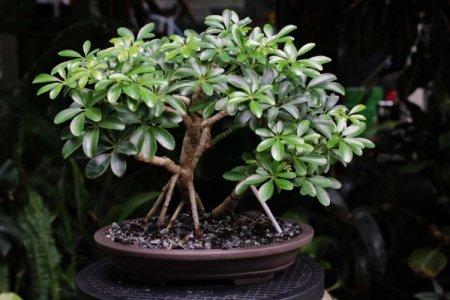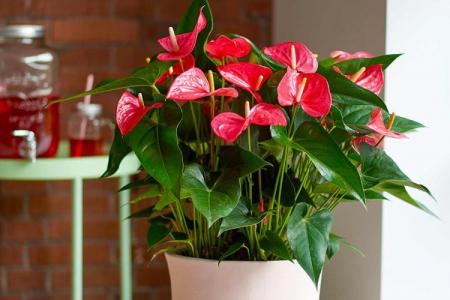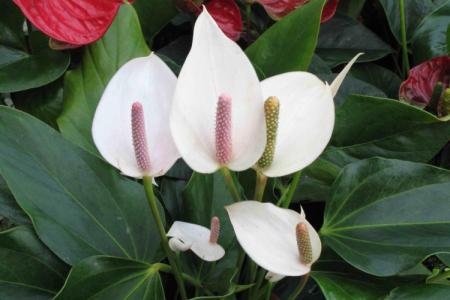
If you love unusual flowering plants for your home, plumeria is definitely your choice! Its spectacular star-shaped flowers immediately attract attention with their bizarre shape. And without them, decorative plumeria is more than good!
general information
The second name for plumeria is frangipani. It is a tall and fast-growing perennial with beautiful leathery leaves and spectacular flowers up to 10 cm in diameter. Plumeria blooms from mid-summer to mid-autumn. Although in its native tropics, it can bloom almost all year round.
In natural conditions, plumeria is a powerful, branched tree that grows to impressive proportions. The shape and shade of the leaves depend on the specific species. The scent of five-petal flowers is reminiscent of jasmine or lily of the valley with citrus notes.
Remember that plumeria sap is toxic and can be very irritating. So it is better to carry out transplanting and pruning with gloves. In some countries, such as Thailand, plumeria is a sacred ritual flower.

Plumeria species
In native latitudes, there are dozens, if not hundreds, of plumeria species and varieties. There are also giant trees up to 10 m, and there are decorative "kids" only 2 m in height. But in indoor gardening, these three types are most often used:
White plumeria
It is her that you most often see in stores and in photographs. It attracts with large buds and a bright but delicate scent. The most common color is white and yellow.

Blunt plumeria
Small decorative look that feels great in the apartment. Even in the wild, such a tree rarely grows up to 2 m - and this is quite a bit for a plumeria.

Red plumeria
Another very popular decorative variety, on the basis of which dozens of breeding varieties have been bred. As you might guess, its peculiarity is red buds.

Plumeria care
This exotic guest impresses not only with her beauty, but also with her unpretentiousness. It is enough to observe a few simple conditions, and the plumeria will delight you with its flowering for a long time!
Temperature and lighting
Plumeria loves warmth and sun. She feels great in the summer, even on the southern windows. For all its visual fragility, direct sunlight will not harm it. But the lack of light immediately affects the quality of leaves and flowering. In winter, make sure that the temperature does not drop below +17.

Watering
Regular watering is needed at any time of the year, but more often in summer. Do not let the earth dry out, but make sure that the water flows down and does not stagnate. The procedure is best done early in the morning and only with warm water.

Humidity and spraying
Also, plumeria needs high air humidity. It can be sprayed, but the buds must not be touched. In addition, we recommend using humidifiers or placing the plant in a tray with damp expanded clay or pebbles.

The soil
The soil for plumeria needs loose and fertile enough. You can use ready-made mixtures for indoor flowering plants. Be sure to fill in a thick drainage layer and make sure that the drainage holes are not clogged.

Fertilizers and feeding
From spring we recommend using complex fertilizers for flowering plants. Moreover, you can alternate the compositions for irrigation and for spraying. Remember, underfeeding is better than overfeeding!

Pruning
Sometimes plumeria is cut to shape. So you can safely cut the elongated and sloppy shoots in early spring. Do not wash or spray the plant until the slices are dry.

Transfer
Young plumeria are replanted every year, and mature trees every 3-5 years. Do not take too large flowerpots and containers, because the plant will quickly turn into a powerful tree.

Reproduction and planting of plumeria
Plumeria grows well and quickly enough that it can be propagated even by seeds - and in 2-3 years it will bloom. First, the planting material is kept in a damp cloth or napkin for a day, and then seated in a light substrate in separate pots with drainage.
Sprinkle the seeds with a thin layer of earth, spray and leave in a warm, bright place under the film. Sometimes you need to ventilate the greenhouse, and after about 2 weeks the first shoots will appear. For delicate sprouts, bright but diffused light is needed.
Plumeria can be propagated by slanting cuttings. Remove all the leaves, treat the cuts with charcoal, wrap the cuttings in a cloth and keep them warm for 2 weeks to dry. Then soak them for a couple of hours in a stimulant solution and plant them immediately in very loose soil with sand or vermiculite. After 2-3 months, the first leaves will appear.

Pest and disease control
Plumeria is almost never affected by pests, but spider mites can sometimes be found on it. Wipe the leaves with a cotton pad and soapy water and use homemade insecticides. To prevent the problem from recurring, we advise you to increase the humidity of the air.
If you take your flowerpot out into the garden for the summer, inspect it at least several times a week. When the first suspicious symptoms appear, spray with special preparations.
Like all tropical plants, when waterlogged, plumeria suffers from fungus. To prevent this, it is enough to observe the watering regime and occasionally carry out preventive spraying with gentle fungicides.

Plumeria - photo
And if you are still thinking about purchasing a plumeria, catch the whole photo gallery! After all, having examined it from all sides, it will be much easier to decide!


























